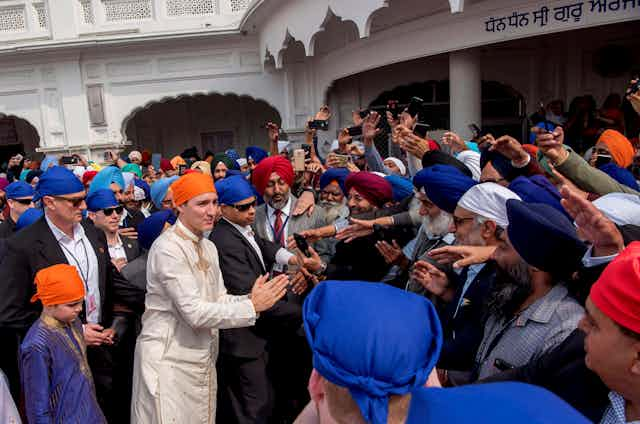Both the Liberals and New Democrats have recently been forced to deal with an issue that usually isn’t part of the political agenda in Canada – Sikh extremism.
Justin Trudeau went on the defensive when it was discovered that Jaspal Atwal, convicted of the attempted murder of an Indian politician in 1986, was invited to a reception at the Canadian High Commission during the prime minister’s recent visit to India. The prime minister subsequently stated his government supports a united India and condemned those who used violence in their campaign for an independent Sikh state, Khalistan.
Meanwhile, Jagmeet Singh, the first Sikh to be chosen to head a major Canadian political party, has also faced questions about his position on Khalistan. The new NDP leader said he condemns “all acts of terrorism in every part of the world, regardless of who the perpetrators are or who the victims are.”
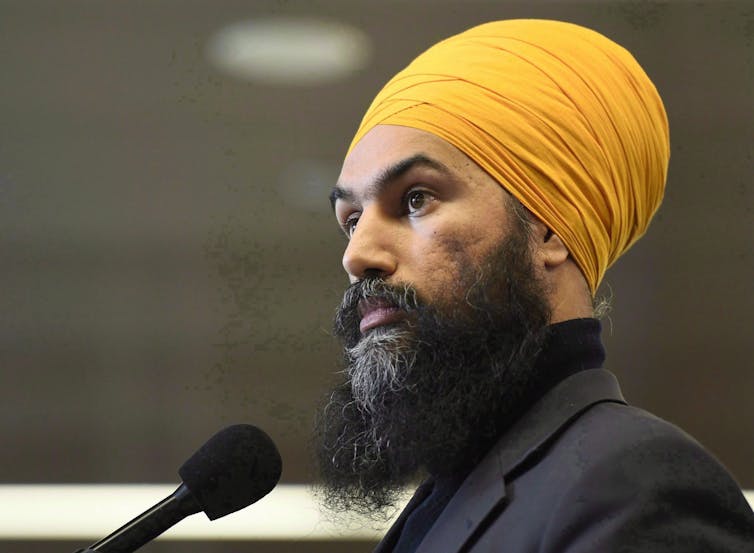
Canada is not the first western democracy to be accused of harbouring Sikh extremists. In the buildup to Trudeau’s visit, reports in Indian media proclaimed that such “radicals” had “taken over most gurudwaras in Canada, the U.S. and the U.K., and organize events where the themes of Khalistan and persecution of Sikhs in 1984 are a running refrain.”
A parallel history? Sikhs in Britain
Indeed, similar reports about “Sikh radicalisation” in Britain in 2015 led me to conduct research on the issue. I analyzed media reports about Sikhs, interviewed Sikh activists and held a series of community consultations to ascertain the main issues and narratives.
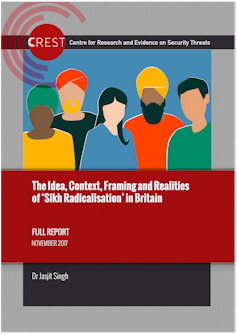
By mapping historical events, I found that Sikh activities in Britain fundamentally changed in 1984 following two events: The storming of Harmandir Sahib (also known as the Golden Temple) during the Indian government’s Operation Bluestar in June 1984 and the violence that took place against Sikhs across India in November 1984 following the assassination of the Indian prime minister by her Sikh bodyguards. In April 2017, this anti-Sikh violence was recognized as genocide by the Ontario legislature.
Before ‘84, Sikhs in Britain had focused on campaigning for the right to wear turbans in the workplace and on motorbikes and in schools. Some even raised funds to support India in the 1971 Indo-Pakistan war. However, the immediate aftermath of Operation Bluestar saw Sikhs in Britain lashing out at the Indian state for the “dishonour” caused to the community with the storming of Harmandir Sahib, regarded by Sikhs as their most significant and precious institution.
In Britain, the immediate response to Bluestar saw Sikhs protesting in huge numbers at Hyde Park London in June 1984, a protest held annually ever since. This period also saw plots against Indian state officials, including an assassination attempt on Rajiv Gandhi, the then prime minister of India.
The reaction to Bluestar also saw increased support for the idea of Khalistan. In Britain, individuals seen to be speaking out against Khalistan or to be aligning themselves closely with India became fatal victims of violence at this time, including Tarsem Singh Toor in 1986 and Darshan Das in 1987.
Sikhs in Canada
I found a similar chronology of events in Canada where, according to national census data, approximately 460,000 people identify as Sikh.
Canadian authorities were clearly unprepared for the emotional impact of the storming of Harmandir Sahib on Sikhs in Canada. Bob Burgoyne, who worked for the Canadian Security Intelligence Service (CSIS) at the time, noted how “it was our lack of understanding of Sikhs and how very emotional (they were) and how this single issue is what propelled us into what was a very tumultuous year.”
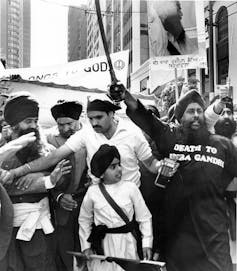
As in Britain, the immediate aftermath of Operation Bluestar saw a number of peaceful protests across Canada against the Indian state.
Some violent attacks also occurred that were related to Khalistan issues, including the 1985 attack on former B.C. premier Ujjal Dosanjh and the murder of Canadian journalist Tara Singh Hayer. There were also plots and protests against Indian state officials including the 1986 assassination attempt on Malkiat Singh Sidhu.
In 1985, the Air India bombing took place, Canada’s worst mass murder to date. This deplorable act, widely condemned by Sikhs at the time, remains the only act of terrorism outside India to have led to the conviction of a Sikh.
Although a number of violent incidents occurred involving Sikhs throughout the 1990s, the majority of these appear to be internal Sikh issues relating to gurdwara governance, the contested nature of religious authority and local factional politics.
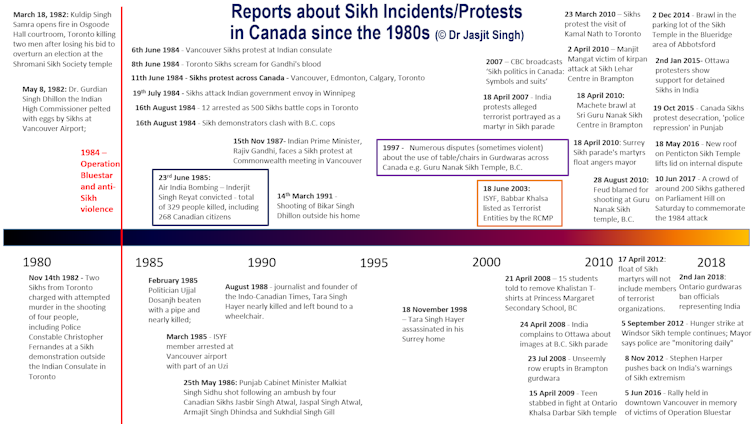
#AskCanadianSikhs: The impact of Sikh activism
My research in Britain found five different types of Sikh activity beyond the simplistic labels of “fundamentalist,” “extremist” or “radical.” These include: Social justice and humanitarian relief; diasporic nationalism around Khalistan; “enforcing” Sikh practices; “defending” the Sikh community against a variety of perceived “external threats;” and personal/factional disputes.
Of these, Sikh activism around social justice and humanitarian relief is the most publicly prominent category in Canada. This includes the Seva Food Bank in Toronto, Calgary Sikh Youth’s Walk Away Hunger programme, the Seva food truck in Edmonton and B.C. Sikhs who delivered $1 million worth of donations for Fort McMurray evacuees. Those participating in this activism use the Sikh concepts of sewa (selfless service) and langar (community kitchen) in a contemporary context.
Read more: From the temple to the street: how Sikh kitchens are becoming the new food banks
Sikhs have responded to the recent public discourse and allegations of extremism and terrorism through the hashtag #AskCanadianSikhs, which emerged in response to the lack of Sikhs invited to participate in media discussions about Sikh issues. A key point being made is that many of the events being referenced happened over 30 years ago.
In my research, I made use of Sophia Moskalenko and Clark McCauley’s distinction between radicalism and activism where “radicalism” is a “readiness to engage in illegal and violent political action” while activism is a “readiness to engage in legal and non-violent political action.”
Given these definitions, it’s clear that although the events in India in 1984 saw an immediate “radical” reaction from Sikhs around the world, much of the contemporary political activity being labelled “Sikh extremism” or “radicalism” is in fact activism focused on social justice.

In my research, I found no threat to the West or to the wider public from Sikh activism as highlighted in the 2017 public report on the terrorist threat to Canada which makes no mention of any terrorist threats by Sikhs in Canada.
In terms of the threat to India, the roles of the nine alleged Canada-based Khalistani operatives who were included in a list presented by the Punjab Chief Minister Amarinder Singh to Prime Minister Trudeau in February 2018 remain to be seen.
Given the parallels between the U.K. and Canada, it’s worth noting that a key driver in contemporary Sikh activism are the events of 1984. Whether this is protesting against the “dishonour” caused to the community with the storming of Harmandir Sahib, seeking justice for human rights abuses around the events of June and November 1984, publicly articulating the need for Khalistan as an act of resistance against the Indian state or simply raising awareness of what occurred, the feeling that the events of 1984 remain unresolved remains an important issue for many Sikhs.
It will take open and honest discussions about crimes committed across the board in the leadup, during and following the events of 1984 for the communities affected to feel they can finally move on.

